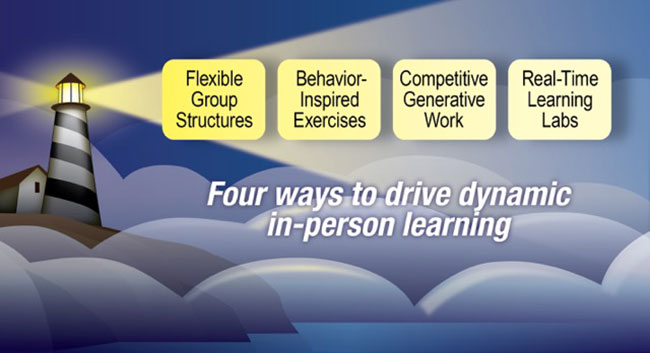SPONSORED CONTENT
 Focus groups are so yesterday. And yet it’s clear that embracing the human element behind the numbers and striving for “why” has never been more important. We have so much information from digital sources that it can be overwhelming. It’s a bit like being surrounded by fog – it appears that we can head in any direction but we don’t know which ones may actually lead us to the next big idea. Most of the time big insight doesn’t come from a collision of numbers but from digging into real stories with real people.
Focus groups are so yesterday. And yet it’s clear that embracing the human element behind the numbers and striving for “why” has never been more important. We have so much information from digital sources that it can be overwhelming. It’s a bit like being surrounded by fog – it appears that we can head in any direction but we don’t know which ones may actually lead us to the next big idea. Most of the time big insight doesn’t come from a collision of numbers but from digging into real stories with real people.
Here are four dynamic in-person research methods that InsightFarm uses to help clients cut through the fog and discover the elusive insights that clear our path to big inspiration.
1. Flexible group structures
Interactions between people are fascinating and provide a fertile environment for learning. Why do you think talk shows are so popular? You’d think it would be as easy as getting a group of people together, galvanizing them with a topic and watching them go. But there are certain structures that work better than others. In fact, organizing with fewer people for shorter periods of time actually yields much stronger outcomes than traditional discussion group structures. And shifting the group dynamic during the experience can take things to a whole new level.
Success story: During a recent in-person research project, four consumers were interviewed together, then broken into pairs to build a storyboard. After sharing their work in a show-and-tell format, they were asked to write individual reflections on what was learned. This provided a degree of depth and breadth not achievable in a simple group discussion.
2. Behavior-inspired exercises
Talking to people can be intensely interesting. But learning what people like by asking them directly is pretty ineffective. Respondents want to please the moderator to get paid. And they want to be invited back, so they may hold back on valuable critique. Tapping into their natural behaviors to sort the wheat from the chaff is a better way to go.
Success story: Recently, we helped a brand build better concepts from a set of alternatives they had created prior to the research. Instead of asking which ideas respondents liked, we read each idea aloud and then gave them time to place each idea in a line from “most interesting” to “least interesting.” Then we probed the extremes – identifying key words, logic or logic gaps and connections to needs that motivated them to physically place a description on the least-most spectrum. This activity quickly revealed strengths and weaknesses in the ideas presented. With a few simple adjustments, those ideas with the most potential turned into some real hunters.
3. Competitive generative work
Unfortunately, there’s often a bias that respondents are not creative. We put them on the spot in an interview and when they can’t come up with a scintillating solution to our most pressing problem, we discount their abilities. Often the problem is that we haven’t given them an inspiring assignment or fuel to build great output. Sometimes setting respondents up for success is all we need to do to get dynamic results.
Success story: One generative tool that helps respondents visualize how they think about a complex topic is “mind mapping.” By listing the major nodes and descriptive details in a diagram a lot of ground can be covered in a short period of time. Simply tasking consumers with drawing a map during an interview leads to boring, underwhelming results. They do the bare minimum and under these conditions, we get what we deserve. For a beverage client, we took a group of four people and broke them up into two-person teams. These “dyads” each drew a map of a specific beverage category (products, behaviors, containers, occasions, etc.) and competed for extra cash based on which team’s output was the most thorough. The energy level, creativity and completeness skyrocketed. Clients served as judges to decide who won in a Shark Tank kind of competition. Clients asked questions directly to the teams and the entire format increased engagement by “breaking the glass.”
4. Real-time learning labs
There’s no substitute for watching people use products in their natural environment. It is the ideal context to learn and inspire even better product experiences but it’s not very practical. It requires an enormous amount time, energy and expense to go into a consumer’s home and wait for the magical moment when they use your product. Sometimes, it makes sense to build a lab where you can observe that specific moment across many respondents and learn in a much more efficient way.
Success story: A few years ago, we were helping a client who makes sippy cups better understand the human factors of closure. This particular cup gave consumers a tactile and audible click when the cup was properly closed. But in the marketplace, many cups leaked, leading to a hypothesis that the closure didn’t work. We could have gone into homes and observed many hours of random child-rearing, waiting for that sippy-cup-filling moment. We could have asked consumers to upload a video of that moment when the sippy cup was filled but the cue was too subtle to hear on video and the reaction on mom’s face was very important to knowing she heard and felt the signal. So, we set up a lab where 20 moms were able to interact with the product six times each in a single day. That’s n=120 interactions. We were able to observe each mom’s interactions, record reactions and perceptions and even apply a torque meter to the cup to see how tightly she had closed it. Without that in-person dynamic learning lab we might never have experienced the huge “aha” moment that made all the difference.
Consumers desperately want to show us their ideas. Brands desperately need to find the right direction more quickly. And dynamic in-person research is the best way to clear away the fog and lead you to deep, rich, meaningful insights.

